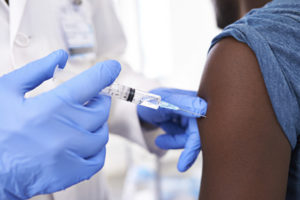
By Chris Vinton, Medical Solutions Quality Assurance Specialist
There are many occupational hazards working as a nurse. One of the most dangerous work hazard nurses face daily, are accidental needlesticks. These types of injuries are preventable and are one of the more serious injuries a nurse can face.
Every year, more than 385,000 needlesticks and other sharps injuries occur — 40% of the injuries occur before use and another 41% of injuries occur during the use of the sharp device on patients. While everyone in a hospital is at risk for needlesticks, the most at risk are the nurses and technicians. A person who is accidently stuck with a needle, has a chance to be exposed to and develop HIV, Hepatitis B, and Hepatitis C, as well as other bloodborne pathogens.
Nurses and Technicians are most at risk when performing the following actions:
- Manipulating needle into the patient
- Disposing needles with tubing attached
- Recapping needles
- Failure to dispose of needles in sharps containers
- Working too quickly
- Bumping into a needle or another worker while either person is holding a sharp
Be especially aware of your surroundings and your work when you’re doing any of the above actions. About 80% of all needlestick injuries will be prevented by being more careful performing those actions. Needlestick injuries are entirely preventable, that cannot be stressed enough!

The best way to prevent needlestick injuries is to use needles that have a safety device and to use the safety device. A safety needle is just a regular needle if you don’t use the safety device. Engaging the safety device reduces sharps injuries by 88%. Secondly, be aware of your surroundings and don’t work too quickly. Remember, you are most at risk during and after use of a needle. Avoid recapping needles, but use the one-handed scoop method if you absolutely have to.
If you do suffer a needlestick injury, wash the immediate area with soap and water. Report the injury to your supervisor and seek immediate medical attention. A number of blood tests need to be completed, some tests will even be months from the first exposure and these tests are just as necessary.
When using needles, remember to use the safety device, be aware of your surroundings, don’t work too fast and always dispose of needles in proper containers. Needlestick injuries are much like forest fires. Only you can prevent them!
For more information about the prevention and treatment of needlestick injuries, click here.